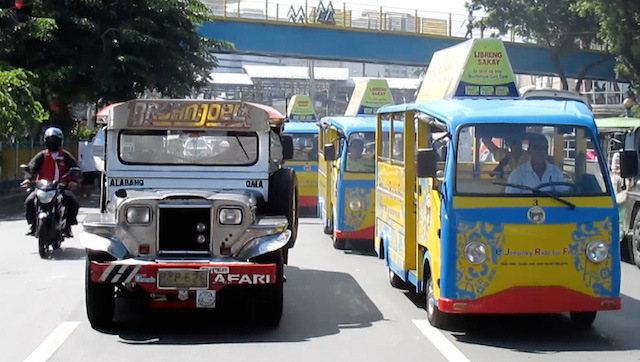8 Bits of Misinformation About the Jeepney Modernization Program, Corrected
Oct 20, 2017 • Kel Fabie

Oct 20, 2017 • Kel Fabie
When looking at an issue that is as multi-faceted as the Jeepney Modernization program, it is important to not assume either the government or the jeepney drivers and operators are in the wrong and to act accordingly. There is a lot of push and pull between both sides, and as the past couple of days of the transport strike has shown, it’s the commuting public who ends up getting caught in the crossfire. As usual.
Unfortunately, in forming an opinion about this issue, a lot of misinformation has been coming out from both sides, and this has muddled the opportunity for sensible discussion, as emotions end up running high, particularly since people’s livelihoods are on the line. Let’s try to shine the light on this issue and break down some common misconceptions about the Jeepney Modernization Program.
It seems a bit ludicrous to expect that overnight, all the jeepneys on the road, y’know, all 270,000 of them in the Philippines, would just disappear, completely replaced by brand spanking new models. The reality is, this rollout will have to happen in stages, as is the case with any undertaking as massive as this.
… nobody said anything about fares not being raised at all. Even without the modernization program, you know it’s just a matter of time before fares rise, to begin with, so the government is being a bit disingenuous here in denying what is admittedly an exaggeration on the part of the jeepney industry, but not clarifying what the effect on fares will actually be.
The honest fact is, at some point, someone has to pay for the modernized jeepneys, and it will end up being either the drivers. owners, and operators, and/or the passengers, since the government’s promised subsidy will only max out at 80,000 PhP. This is very important because the new E-Jeepneys are pegged at 1.5 to 1.8 Million each. Not everyone can afford that, even on downpayment.
The modernization program is geared towards mutual uplifting, as it is aimed towards bringing a mode of transportation that should have been abolished ages ago up to international standards, by providing them with modernized jeepney units produced by local businesses. In short, if all goes according to plan, this modernization program benefits Filipinos all around, instead of international car manufacturers.
It might seem like highway robbery for the jeepney sector, but the reality is, we’ve allowed them to get away with sub-standard service and vehicles for so long that they now think it is perfectly acceptable in 2017 to have what was already considered a surplus item in the 1950’s. Inasmuch as we have to consider the livelihood of the jeepney sector (because this modernization is admittedly not a cheap process) it is us, the commuters, who bear the ultimate risk of riding in jeepneys, and we know it’s not exactly the safest thing in the world.
Unless proven otherwise, when it comes to traversing flooded roads, the classic jeepney is shockingly the best vehicle you can count on for that. An E-jeepney needs to prove its mettle under these constantly hazardous conditions first because even modern automatic cars can sputter and die if the water is high enough, where the vast majority of jeepneys are still raring to go, and in a country like the Philippines, this isn’t a small issue.
First, the modernized jeep seats 22 instead of the average 16 of the current jeepneys.
Secondly, the modernized jeep has a fuel efficiency that is 44% better than current jeepneys, yielding in fewer diesel purchases for a higher number of fares.
In the long run, this is definitely a worthwhile investment. Unfortunately, let’s be realistic: not all jeepney drivers have the luxury of seeing this investment bear fruit before they can no longer pay for their next downpayment, and that’s a significant problem for them.
It’s unpopular because let’s face it: 650,000 drivers will be affected by this program, and it is often not in their best interests to take on such a huge expense when their gains can only be felt a few years down the road. A lot of these people don’t have the luxury of years to wait.
Despite that, this is a program that should have been done a long time ago, and the longer they put it off, the more accidents, tragedies, and complications we have to deal with that could have been prevented in the first place if the jeepney modernization program were actually carried through.
Unfortunately, and we cannot stress this enough, the jeepney problem is merely one symptom of the myriad we have to deal with on a daily basis that has led to this horrible traffic situation we now face every single day, and fixing it would probably have only a marginal effect at best on the congestion issue itself.
Where do you stand on this issue? Tell us your thoughts below!
Kel Fabie. is a DJ, host, mentalist, satirist, comedian, and a long-time contributor to 8List (Hello, ladies!). He has an Oscar, a Pulitzer, a Nobel, and two other weirdly-named pet dogs. He blogs on mistervader.com.
Input your search keywords and press Enter.
